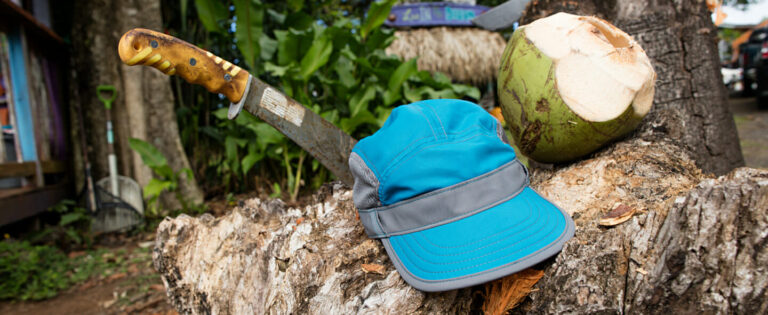You have spent several days flying, driving, travelling by train or perhaps even using a combination of all of the above to reach your desired destination. Then, the approach turned out to be more of a challenge than you had expected, so you’re exhausted but so mesmerised by the landscape that you absolutely have to take a picture. After all, this is what you’ve always dreamed of, and there it is, right before your very eyes: the mountain, the one your climbing mates have told you about a hundred times and the one you were boasting about at the climbing wall not too long ago.
It goes without saying that you’d like to capture this moment in all its glory with your smartphone or fancy digital camera. So you do. But, once you get home and look at the pictures on your computer, you realise that not only does the magic of the place not come across in the photos, but you have absolutely nothing to show for your efforts and your unforgettable trip! A tragedy for anybody who is remotely interested in photography! Fortunately, we’ve got a solution. If you’d like to prevent this happening the next time you head to the mountains, do read on. We’ve got some tips for you…
1. Wait for the golden hour

The best time of day to take spectacular pictures is in the hours shortly after sunrise and shortly before sunset. When the sun goes down, light becomes much softer, the shadows longer and the colours much more intense. Overall, there is significantly more contrast compared to daylight. The light during these precious hours make for a much more dramatic atmosphere, and it’s precisely this mood and emotion that we want to inject into our photos. The golden hour allows a photographer to experiment and play with shadows and silhouettes in creative ways.
You can find out what time the sun rises and sets in your region online. Plus, there are several outdoor watches, such as the Suunto Ambit/Spartan or the Garmin Fenix that can display this information as well. But, no dawdling! The sun sets faster than you think.
2. Lines guide the eye through the photograph

Certain elements in an image can help guide the eye through a photo. These elements can be roads, trails, waterways, fences or the like. But, natural things like sand dunes, waves, trees or mountains are ideal as well, especially when the lines connect the foreground with the background. Why? Because they help to create a sense of depth.
If your photograph still doesn’t look that dynamic, oftentimes a change in your position or the point of view can help create the desired effect of depth. Take a few steps forwards or backwards and try to retake the picture.
3. Change your position often

We are used to perceiving the world from the level of our eyes. That’s why, you’ll always find adverts at eye level. That way, we’ll definitely see them! By changing the perspective when taking your next outdoor photo, your image on Instagram will stand out from the rest. For example, you can climb up a cliff and take a picture from above, revealing the entire area from a bird’s eye view, or kneel or lie down on the ground to get a low perspective.
Even one of the most frequently photographed places can look totally different when shot from a „new“ perspective. There is simply so much to discover above and below eye level.
4. Having people in the photograph reinforces the perspective

By taking a picture of a person in a landscape, the human eye can better understand where the image was taken from. This trick also has the added bonus that it can even make the person looking at the photo feel as if he or she were the one being photographed. Having a person in the photograph also increases the dynamics of a landscape and gives an impression of how far away the mountains in the background really are.
If the weather is bad or the light less than optimal, a person wearing bright and vibrant outdoor clothing can give your photo a boost. If there’s nobody there but you, a tent or animals in the foreground can also help to achieve the desired effect.
5. Wide-angle lenses enhance perspective

When you finally reach the summit of the mountain, you can often see for miles and miles into the distance. But, how can you capture this feeling of standing above everything and looking into the distance in a photo? Well, the answer is wide-angle lenses, which can help capture as much of the landscape as possible in a single photo.
The panorama function of digital cameras also allows you to get a large scene in one photo. And, if you’ve only got your smartphone on you because you’re trying to save space, there are special wide-angle lenses you can use for this purpose. All you need to do is clamp it to the front of the phone’s lens and you’re ready to go!
6. You can take fantastic pictures in the dark

After you’ve got your tent all set up after a long day of walking and night begins to fall, there are still plenty of opportunities to take some impressive pictures. You can have a friend stand completely still while wearing a head torch pointed at a certain spot. This will prevent the light from the lamp coming across as a kind of „veil“ in the picture. You can also illuminate your tent from the inside using some kind of light source. Use a tripod to get a sharp image and avoid shaky pictures.
Even stars in the sky above those stunning mountain peaks can be photographed relatively easily. However, in order to ensure that you get the best results, you need to make sure the settings on the camera are correct. The camera should be firmly mounted to a tripod. If you don’t have a tripod, you can use a sturdy rock or a hut’s windowsill as well. The aperture should be opened as wide as possible to let as much light in as possible. Then you can experiment with different exposure times. If the exposure time is too long, the stars in the sky will move as a result of the rotation of the earth and appear blurred. The ISO value should be between 1600-5400 depending on the camera model.
You’ll get the best results when the moon is really bright. And, the further away you are from civilization, the better, because „light pollution“ – the artificial light from cities -, makes the stars in the sky less visible than they are out in the wilderness.
7. Longer exposure times open up new possibilities

Long exposure photography is an exciting tool that can be used to create creative images. When there are moving elements, such as water – be it in the form of a stream, waterfall or the sea – long exposure photography can be used to make the water’s movements appear softer. You can experiment with exposure times between 1-30 seconds. The longer the exposure time, the greater the effect.
You don’t have a tripod? As with night shots, you can let your creativity run wild and use natural elements, such as a tree stump or a rock to stabilise your camera. You should also use the camera’s self-timer function or an external one (there are wired, wireless or app options provided by camera manufacturers). Otherwise, the camera may shake slightly when you press the button, resulting in your image becoming blurred.
8. Obstructions in pictures can be interesting

If you want to take a picture of something in the background, obstructions in the foreground can enhance the composition of the photograph. Branches, plants, walls or flowers all work well as intentional obstructions. It’s even okay for it to be a bit chaotic at times. It is the wild after all!
Tip: Are you already packed up and ready for your next big outdoor adventure? Then don’t forget to charge your camera batteries and insert a memory card before you leave. A lot of modern cameras (and obviously smartphones) can be charged with a USB cable and a power bank when you’re on the move, so it doesn’t matter if you’re gone for 3 days or 3 weeks. That way, you’ll always be ready to capture the beautiful landscapes and exciting moments.
9. Incorporate reflections into the image

You can use water for your own composition. Reflections on lakes, seas or even in puddles after it rains can make a picture appear very dynamic and there’s a nice symmetry to it as well. But for this to work, the weather needs to be calm. If the water is moving too much, the reflection won’t come across as well in a photograph. Try to find a spot where several or one interesting element of the landscape is reflected in the water.
You don’t even need a proper camera – a smartphone will do just fine.
A brief explanation of technical terms in photography
Shutter speed (exposure time): indicates the length of time when the camera shutter is open. During this time, the sensor inside the camera is exposed to light. Shutter speed is usually measured in seconds. Short exposure times (1/500) make it possible to virtually freeze the movements of fast-moving objects (birds in the sky, sports photography). Long shutter speeds (1-30 seconds) allow you to smooth out moving water, capture the starry sky, and make something visible in the image even when there is little light.
Aperture (F-stop): changes how wide the lens’ opening is. The more the lens is opened, the more light falls on the camera’s sensor. Lower f-stop numbers (f/1.4 – 3.5) give you a very small depth of field and a blurred background. Therefore, the lower f-stop numbers are ideal for “isolating“ an object from the background (portrait, macro shot of animals or plants). Higher f-stop numbers (f/5.6 – 22) are perfect for landscape shots. The shot has more depth of field, while the background is still in focus.
ISO (sensitivity to light): The ISO value controls how sensitively the camera’s sensor reacts to light. As a rule of thumb, an ISO value between 100 and 250 is recommended for bright light conditions (day, sun). Because there’s hardly any light at dusk, in the evening and especially at night, you need an ISO value between 1600-3200 to get good pictures.
Wide-angle lens: A wide-angle lens has a short focal length (10-24 mm) and a wider field of view than normal. This means that objects that are far away appear even smaller. This results in a smaller image scale and allows you to fit more into the frame compared to a longer focal length (50-100 mm).




